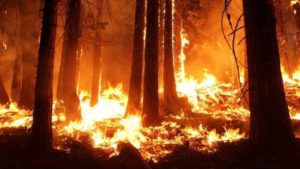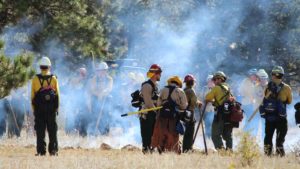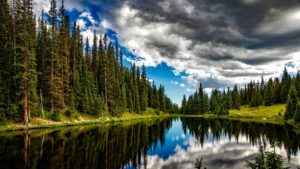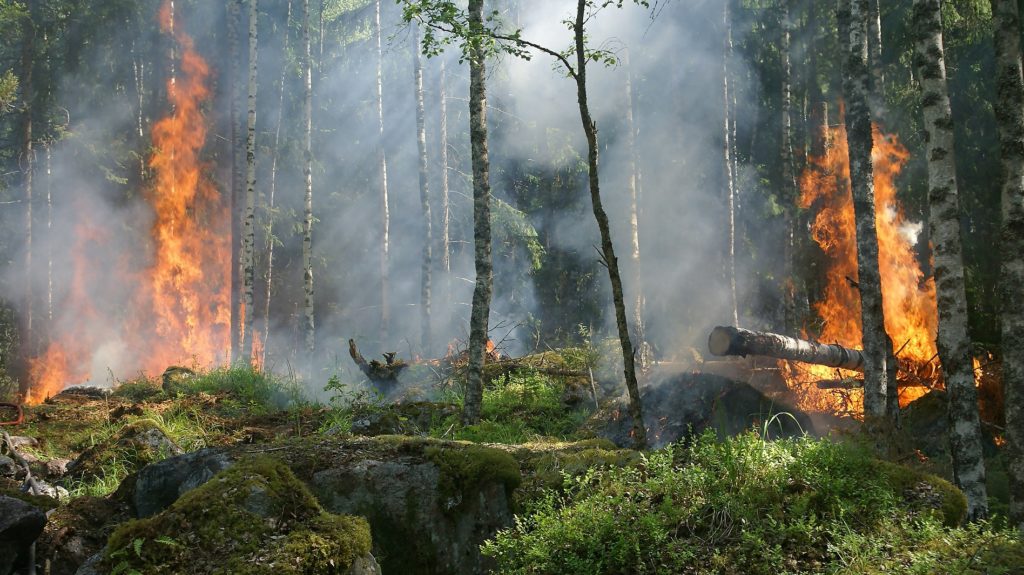 Controlling Wildfire in the West:
Controlling Wildfire in the West:
Anyone living in the arid mountain West knows the reality of wildfire; it’s not if wildfire will happen, but when. Each summer as the temperatures rise and the landscape dries, we hope to be spared the sight of smoke on the horizon. What if we could combat wildfire before it even begins?
In their report, A Preliminary Green-Gray Analysis for the Cache la Poudre and Big Thompson Watersheds of Colorado’s Front Range, the Center for Sustainable Economy and World Resources Institute concur that catastrophic wildfire is the single biggest threat to water quality in Northern Colorado. They estimate that there are more than 444,000 acres in these two watersheds currently at high risk for wildfire. What if we could reduce the size and scope of wildfires? What if we could fight fire with fire…and win?
A Brief History of Fire
Fire has been used for hundreds of years to modify the landscape for our benefit. Native Americans and early settlers used fire to improve hunting and clear land for farming. Ranchers use fire to keep irrigation ditches clear and to stimulate the growth of new vegetation for grazing. Wildlife biologists use fire to improve habitat and forest managers use it to reduce hazardous fuels. Fire is not only a valuable land management tool, but it is extremely cost effective. Despite its many historic and modern day uses, public misperception of prescribed fire persists.
What is a Prescribed Fire?

The U.S Forest Service describes it as a planned fire used to meet management objectives. The right fire in the right place at the right time. Prescribed burning (also known as a controlled burn) involves careful planning, coordination and monitoring. These planned fires are strategically set by experienced fire professionals to restore and maintain healthy forests and grasslands. The Interagency Prescribed Fire Planning and Implementation Procedures Guide has established national interagency standards for the planning and implementation of prescribed fire.
Benefits of Prescribed Fire:
- Reduces hazardous surface and crown fuels
- Decreases wildfire severity; protecting communities from extreme fires
- Protects water quality by decreasing sediment and ash in runoff
- Raises canopy base heights so ground fires are less likely to convert to crown fires
- Minimizes the spread of pest insects and disease
- Removes unwanted species that threaten native species
- Decreases tree density creating a more natural patchwork mosaic on the landscape
- Improves forage for wildlife through improved nutrient cycling and growth of herbaceous plants
- Improves habitat for threatened and endangered species that depend on fire-maintained habitats
- Enhances forest resilience to wildfire by promoting fire-tolerant species
- Encourages tree seedling establishment and growth by reducing competition and exposing bare ground necessary for some species to regenerate
- Helps create a more diverse forest with various age classes of trees represented
Prescribed Fire is Key for Colorado Watershed Health
We can reduce the impact of wildfire, restore the health of our watersheds and make our communities safer by using prescribed fire on the landscape. Land managers can control the size, timing and location of a planned burn using a set of conditions that considers public safety, weather, and burn objectives. By reducing hazardous fuel loads on the forest floor and opening up the canopy, we create a patchwork mosaic, which is less conducive to massive, uncontrolled wildfires. Using fire proactively, we can combat wildfire before it begins… fighting fire with fire…and win.
